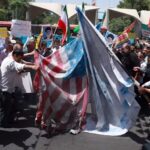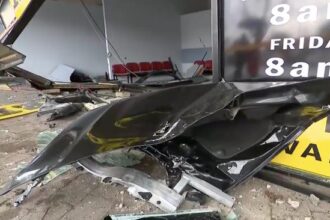In a stark reminder of the ongoing conflict in the Middle East, the Israeli Defence Forces (IDF) recently recovered the remains of three hostages in the Gaza Strip, reigniting conversations about justice, loss, and the growing humanitarian crisis. The victims, identified as Yonatan Samerano, Ofra Keidar, and Shay Levinson, were taken during the October 7 Hamas attack and confirmed to have been killed during that assault.
This tragic development came as Kobi Samerano posted a heartfelt message online, noting that his son’s body returned on what would have been Yonatan’s 23rd birthday. These poignant words brought emotional clarity to a deeply painful moment: “The campaign to return the hostages continues consistently and is happening alongside the campaign against Iran,” Prime Minister Benjamin Netanyahu emphasized in a formal statement.
According to the IDF, Hamas abducted 251 people during the brutal attack, which also left 1,200 individuals — mainly civilians — dead. While over half the hostages have returned through agreements and rescues, at least 50 remain in captivity, and only a portion are believed to be alive.
The reality of Gaza’s suffering continues to worsen. The Gaza Humanitarian Foundation (GHF), an aid group backed by both the U.S. and Israeli governments, recently admitted that it cannot keep pace with growing demand. “The people of Gaza desperately need more aid,” said John Acree, interim director of the GHF. Despite efforts to deliver aid at scale, many areas remain inaccessible, trapping civilians in famine-like conditions.
More than 55,000 Palestinians, mostly women and children, have died due to Israeli airstrikes and ground operations, according to figures from the Palestinian Ministry of Health. These numbers continue to rise as humanitarian workers face life-threatening obstacles. Multiple deaths have occurred near food distribution points — a devastating reflection of how critical food security in Gaza has become.
Even though GHF was brought in to replace UN operations, it has faced intense scrutiny from international watchdogs and local organizations. Its logistical failures and the lack of neutral transparency have raised alarm bells across humanitarian networks. Critics describe GHF’s distribution model as ineffective, noting that over 450 people have died and thousands more have been injured during or around its delivery zones since late May.
Acree acknowledged the inability to meet full demand and revealed the foundation is actively working with Israeli authorities to open new supply channels in northern Gaza. However, conflicting accounts between GHF and witnesses on the ground continue to raise serious questions. While GHF denies its role in recent fatalities, independent reports and local rescue teams suggest otherwise.
The international community watches with growing concern. Calls for transparency, neutral aid efforts, and a sustained ceasefire dominate diplomatic conversations, but action remains slow. Every day that passes without resolution costs more lives — both Israeli and Palestinian.
In the midst of this crisis, the grief of families and the suffering of Gaza’s civilians speak louder than political rhetoric. As the world debates accountability, what’s needed most is decisive, humane action.






